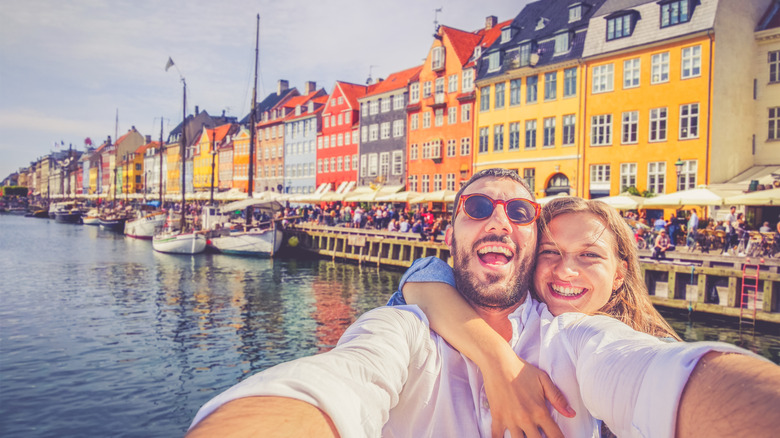The Overlooked Region In Europe That Quietly Tops Most Lists For Happiness And Quality Of Life
When it comes to the happiest countries in the world, several countries routinely make the list. As a whole, the region of Scandinavia — Norway, Denmark, and Sweden — is consistently in the top 10 of the annual World Happiness Report (WHR). Iceland and Finland, which make up the Nordic region, also rank highly on the WHR, with Finland nabbing the top spot several years in a row.
So what is it about this area of Northern Europe that makes it so...happy? Not only are Scandinavian countries considered some of the happiest countries in the world, but they also rank high on the Global Citizen Solutions' Quality of Life Index and the Global Peace Index (GPI). They are also among the cleanest countries in the world, according to the Environmental Performance Index (EPI). So, not surprisingly, countries that have a high quality of life and are peaceful and environmentally friendly make for a happier populace. But what else contributes to their overall life satisfaction? And what can other countries learn from Scandinavia when it comes to happiness?
Scandinavia: the happiest region on Earth
Sure, you can explore fairytale castles, national parks, and trendsetting cities in the Scandinavian region, but there's more to the collective Scandi happiness than that (although none of these things hurt). One big factor for happiness comes down to social support, both from the government and between members of the community. As one commenter notes on Reddit, "the strong social support systems, high levels of trust in government, and emphasis on work-life balance in Nordic countries contribute to overall well-being." Another comment points out the area's "free healthcare, free college tuition, and a social security plan." Yes, these countries pay higher taxes, but the citizens certainly reap the benefits. Each Scandinavian country has a system in place to ensure that the wealthiest individuals pay more in taxes, decreasing income inequality. Citizens who know their government has their backs tend to be happier, and social safety nets go a long way toward easing the unexpected stressors of life.
Many experts also attribute the happiness of the region to community relations. And, although Scandinavian winters get a bad rap, the collective fight against the elements strengthens relationships. People in harsher environments have to rely on their neighbors more for survival, which can build community. All of these reasons, and more, can contribute to the overall happiness of Scandinavia.
What we can learn about happiness from Scandinavia
So what lessons can countries or individuals take away from the happy Scandi region? Denmark (the country that is widely considered one of Europe's most kid-friendly) has policies that support families, offering paid family leave and affordable childcare. Norway, Sweden, and Denmark also prioritize not just clean environments but fresh air. Time in nature can decrease stress and improve happiness, and the Scandinavian countries — even the cities — have plenty of access to forests, beaches, mountains, and more.
When it comes to the happiness of a country, the WHR states that Nordic countries are so highly ranked because of the combination of "high life satisfaction, high levels of social and institutional trust, high-quality democratic institutions, extensive welfare benefits, and social-economic equality." While some of these things are beyond an individual's control, other countries in the world hoping to improve the lives of their citizens should take note. Those who don't happen to live in Scandinavia can work on building community, fighting for democracy, promoting green living, and getting outside. It sounds like a big ask, but remember — a simple walk in the trees or coffee with a pal can improve our happiness levels, even just a tiny bit. And every little bit matters.


